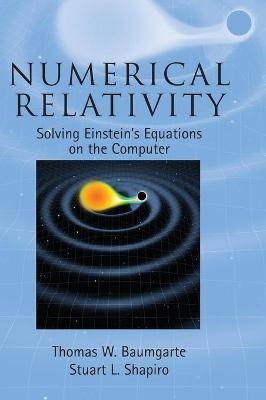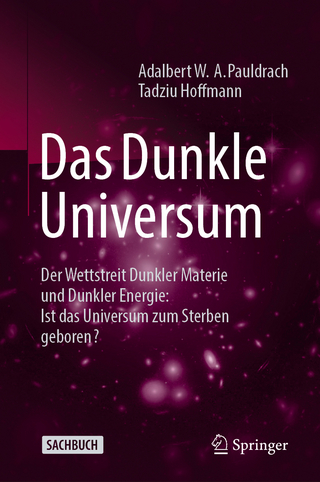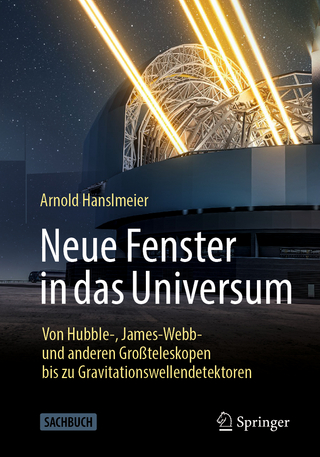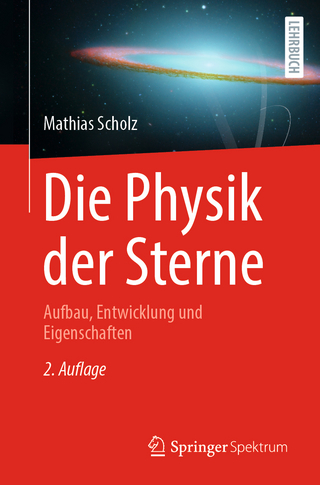
Numerical Relativity
Cambridge University Press (Verlag)
978-0-521-51407-1 (ISBN)
Aimed at students and researchers entering the field, this pedagogical introduction to numerical relativity will also interest scientists seeking a broad survey of its challenges and achievements. Assuming only a basic knowledge of classical general relativity, the book develops the mathematical formalism from first principles, and then highlights some of the pioneering simulations involving black holes and neutron stars, gravitational collapse and gravitational waves. The book contains 300 exercises to help readers master new material as it is presented. Numerous illustrations, many in color, assist in visualizing new geometric concepts and highlighting the results of computer simulations. Summary boxes encapsulate some of the most important results for quick reference. Applications covered include calculations of coalescing binary black holes and binary neutron stars, rotating stars, colliding star clusters, gravitational and magnetorotational collapse, critical phenomena, the generation of gravitational waves, and other topics of current physical and astrophysical significance.
Thomas W. Baumgarte is a Professor of Physics at Bowdoin College, and an Adjunct Professor of Physics at the University of Illinois at Urbana-Champaign. He received his Diploma (1993) and Doctorate (1995) from Ludwig-Maximilians-Universität, München, and held postdoctoral positions at Cornell University and the University of Illinois before joining the faculty at Bowdoin College. He is a recipient of a John Simon Guggenheim Memorial Foundation Fellowship. He has written over 65 research articles on a variety of topics in general relativity and relativistic astrophysics, including black holes and neutron stars, gravitational collapse, and more formal mathematical issues. Stuart L. Shapiro is a Professor of Physics and Astronomy at the University of Illinois at Urbana-Champaign. He received his A.B. from Harvard (1969) and his Ph.D. from Princeton (1973). He has published over 335 research articles spanning many topics in general relativity and theoretical astrophysics and co-authored the widely used textbook Black Holes, White Dwarfs and Neutron Stars; The Physics of Compact Objects (John Wiley, 1983). In addition to numerical relativity, Shapiro has worked on the physics and astrophysics of black holes and neutron stars, relativistic hydrodynamics, magnetohydrodynamics and stellar dynamics, and the generation of gravitational waves. He is a recipient of an IBM Supercomputing Award, a Forefronts of Large-Scale Computation Award, an Alfred P. Snow Research Fellowship, a John Simon Guggenheim Memorial Foundation Fellowship, and several teaching citations. He has served on the editorial boards of The Astrophysical Journal Letters and Classical and Quantum Gravity. He was elected Fellow of both the American Physical Society and Institute of Physics (UK).
Preface; Suggestions for using this book; 1. General relativity preliminaries; 2. The 3+1 decomposition of Einstein's equations; 3. Constructing initial data; 4. Choosing coordinates: the lapse and shift; 5. Matter sources; 6. Numerical methods; 7. Locating black hole horizons; 8. Spherically symmetric spacetimes; 9. Gravitational waves; 10. Collapse of collisionless clusters in axisymmetry; 11. Recasting the evolution equations; 12. Binary black hole initial data; 13. Binary black hole evolution; 14. Rotating stars; 15. Binary neutron star initial data; 16. Binary neutron star evolution; 17. Binary black hole-neutron stars: initial data and evolution; 18. Epilogue; Appendixes; References; Index.
| Zusatzinfo | Worked examples or Exercises; 97 Halftones, unspecified; 68 Line drawings, color |
|---|---|
| Verlagsort | Cambridge |
| Sprache | englisch |
| Maße | 193 x 253 mm |
| Gewicht | 1670 g |
| Themenwelt | Naturwissenschaften ► Physik / Astronomie ► Astronomie / Astrophysik |
| Naturwissenschaften ► Physik / Astronomie ► Relativitätstheorie | |
| Naturwissenschaften ► Physik / Astronomie ► Theoretische Physik | |
| ISBN-10 | 0-521-51407-X / 052151407X |
| ISBN-13 | 978-0-521-51407-1 / 9780521514071 |
| Zustand | Neuware |
| Informationen gemäß Produktsicherheitsverordnung (GPSR) | |
| Haben Sie eine Frage zum Produkt? |
aus dem Bereich


